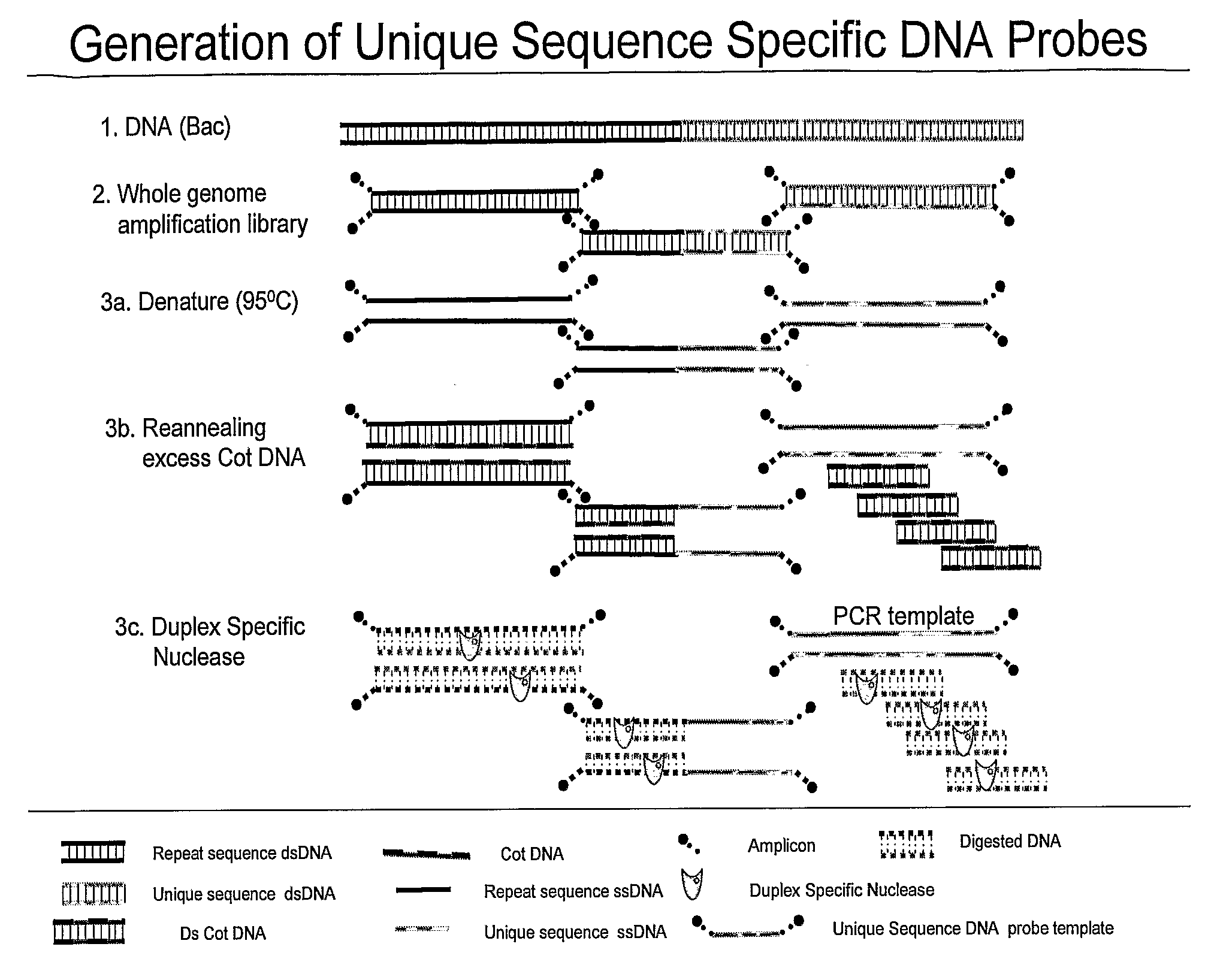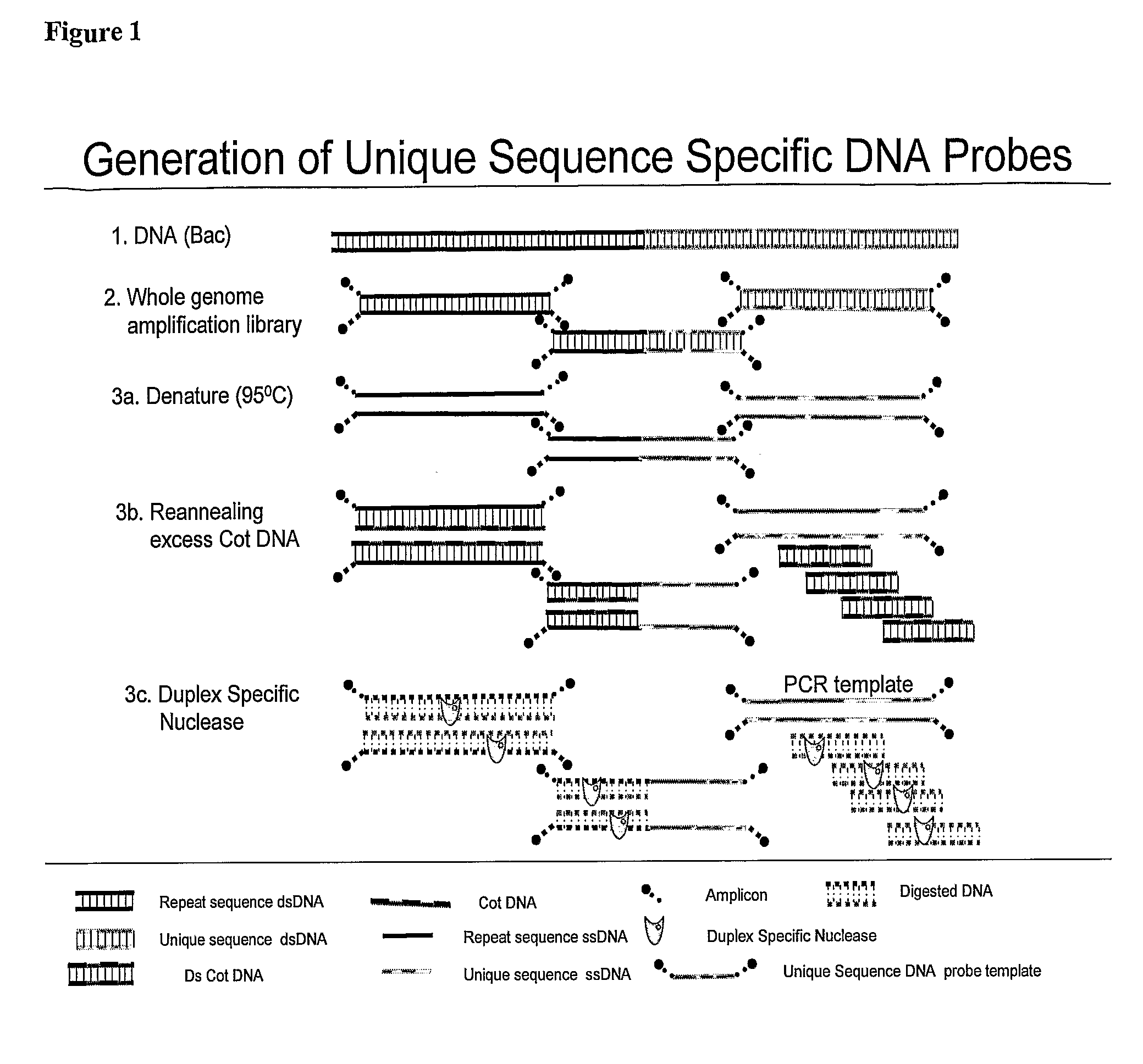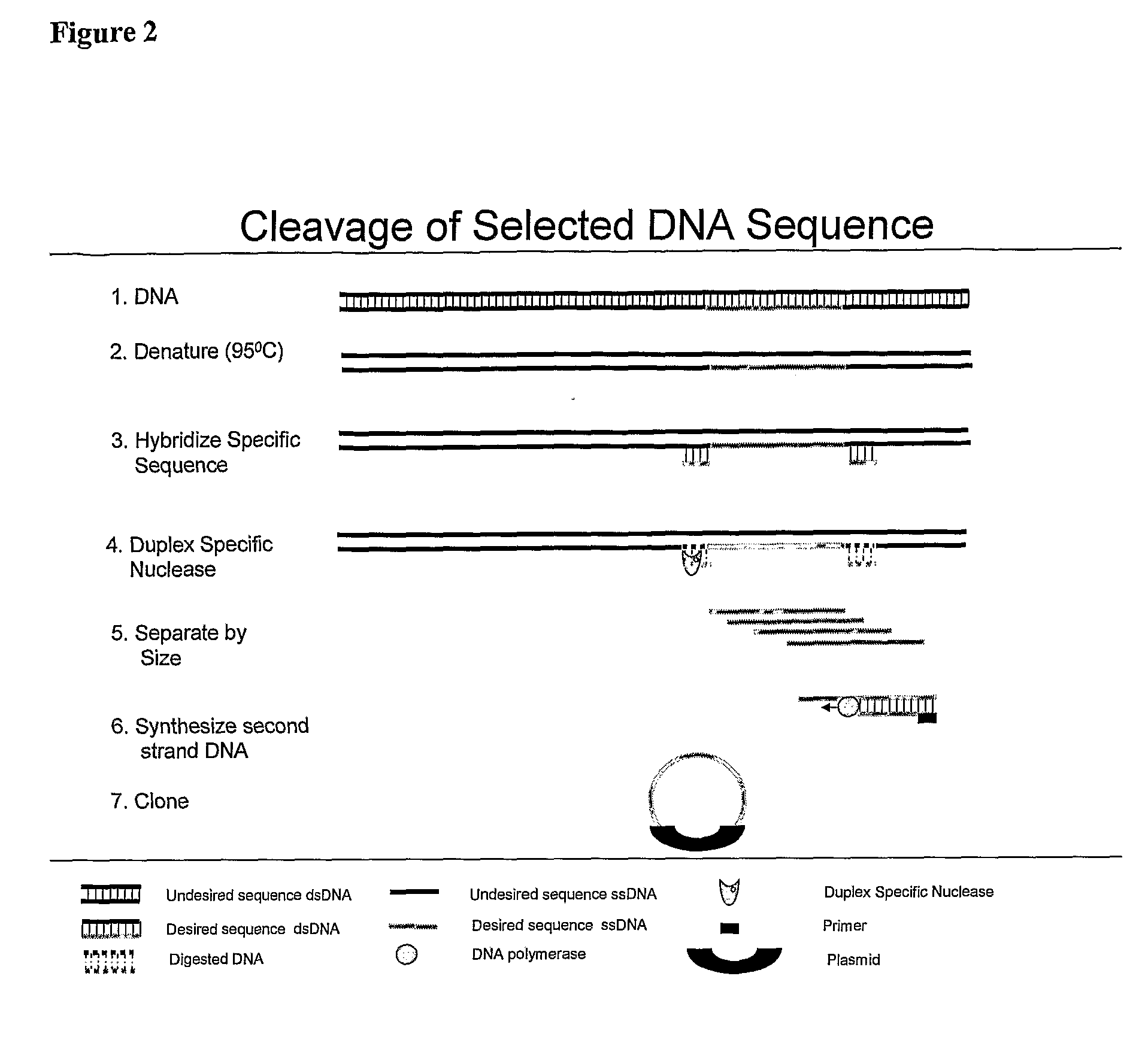Methods and composition to generate unique sequence DNA probes labeling of DNA probes and the use of these probes
a technology of dna probes and unique sequences, applied in the identification field of dna sequences, genes or chromosomes, can solve the problems of loss of reporter molecules used to initially identify target cells, and achieve the effect of increasing specificity, confirming the identity of suspect ctc, and increasing the risk of recurren
- Summary
- Abstract
- Description
- Claims
- Application Information
AI Technical Summary
Benefits of technology
Problems solved by technology
Method used
Image
Examples
example 1-detection
of Chromosomes or Portions of Chromosomes using Repeat-Depleted DNA Probes
[0070]BAC clone CTD-2019C10 was selected to be used as a probe for the Her-2 gene by electronically screening the human genome using the UCSC Genome Browser software (http: / / genome.ucsc.edu / cgi-bin / hgGateway) and clones were obtained from Invitrogen (Carlsbad, Calif.). BAC DNA was isolated using the Large Construct Kit from Qiagen (Valencia, Calif.). Source DNA was prepared using 10 nanograms of purified BAC and the Genomeplex® Complete Whole Genome Amplification Kit (Sigma-Aldrich St. Louis, Mo.) according to the manufacturer's directions. Depletion mixes were prepared containing 2 micrograms of Cot-1 DNA, ×Duplex Specific Nuclease buffer (Evrogen, Moscow, Russia), 0.3 molar NaCl, and 66 nanograms of source DNA. The depletion mixes were denatured for 5 minutes at 95° C., placed on ice for 10 seconds aid 1 unit of Duplex Specific Nuclease (Evrogen, Moscow, Russia) added. Samples were incubated at 65° C. for 90...
example 1
of Cytogenetic Aberrations after CTC Identification.
[0101]CTCs from 7.5 mL of blood were identified as cytokeratin, CD45-nucleated cells after immunomagnetic enrichment targeting the EpCAM antigen using the CellSearch System (Veridex, LLC). CTCs are identified by the CellTracks® Analyzer (Immunicon Corporation) where the cells are magnetically held along the upper surface of a cartridge. For cytogenetic analysis, the fluid in the cartridge was removed and the cells fixed while maintaining their original position. Fluorescently labeled probes for chromosome 1, 7, 8 and 17 were introduced into the cartridge and hybridized to the cells. The fixation and hybridization process removes the fluorescent labels used for CTC identification. After hybridization the cartridges were again placed on the CellTracks® Analyzer and analyzed for a second time. The fluorescent images of the CTC's identified in the first scan are then combined with the fluorescent images from each of the four chromosome...
example 2
n of Anti-Cancer Targets on CTC's to Predict Therapeutic Success.
[0102]The CellSearch System™ has been used in multi-center prospective studies to demonstrate that presence of tumor cells in blood of patients with metastatic carcinomas is associated with poor survival prospects. Failure to eliminate Circulating Tumor Cells (CTCs) after one cycle of therapy in these studies strongly suggests that these patients are on a futile therapy. Assessment of the presence of therapeutic targets on the tumor should enable the appropriate choice of therapy. Anti-cancer targets are identified on CTCs before initiation of therapy. Cells from 7.5 mL of blood are identified as cytokeratin(CK)+, CD45− and nucleated after EpCAM immunomagnetic selection. Suspect CTCs are identified and localized at the upper surface of a cartridge where they are held by a magnetic field. Fluorescently labeled antibodies that recognize treatment targets associated with known therapies such as HER, IGF-1, Bcl-2 and EGFR ...
PUM
| Property | Measurement | Unit |
|---|---|---|
| magnetic holding forces | aaaaa | aaaaa |
| volume | aaaaa | aaaaa |
| diameter | aaaaa | aaaaa |
Abstract
Description
Claims
Application Information
 Login to View More
Login to View More - R&D
- Intellectual Property
- Life Sciences
- Materials
- Tech Scout
- Unparalleled Data Quality
- Higher Quality Content
- 60% Fewer Hallucinations
Browse by: Latest US Patents, China's latest patents, Technical Efficacy Thesaurus, Application Domain, Technology Topic, Popular Technical Reports.
© 2025 PatSnap. All rights reserved.Legal|Privacy policy|Modern Slavery Act Transparency Statement|Sitemap|About US| Contact US: help@patsnap.com



